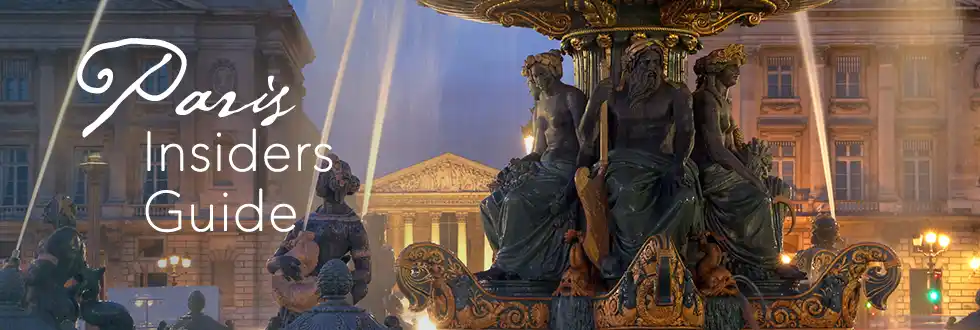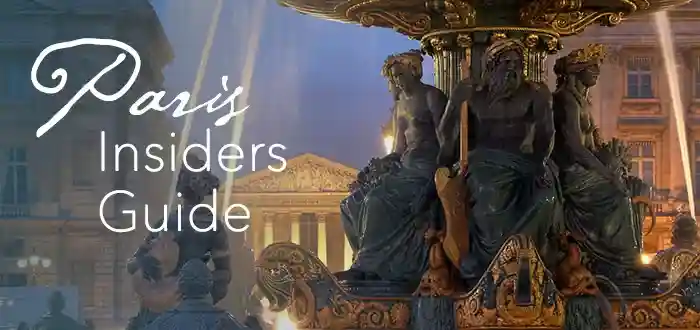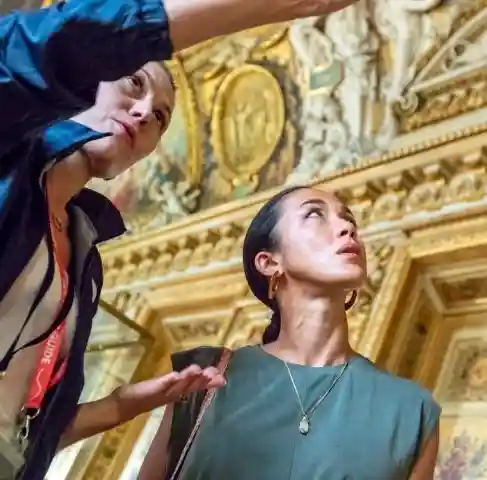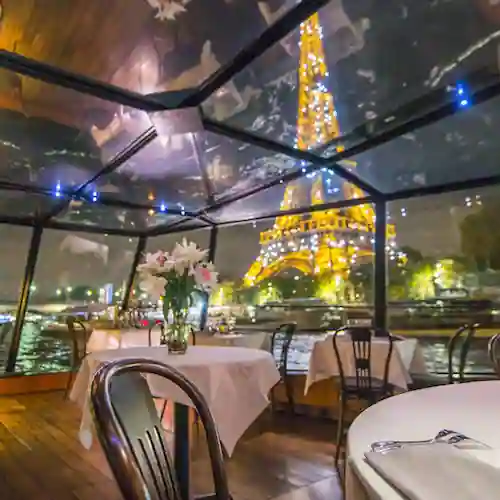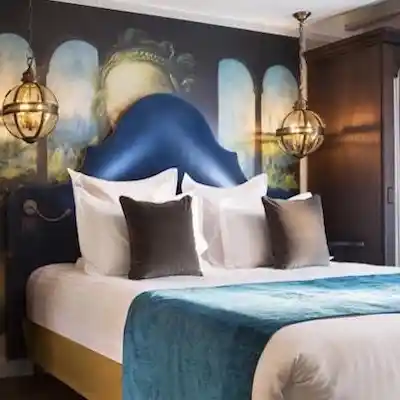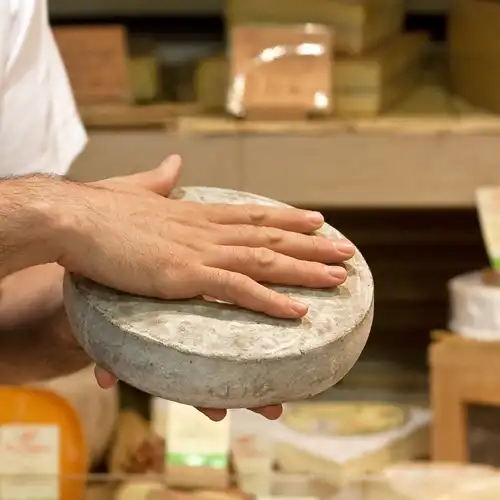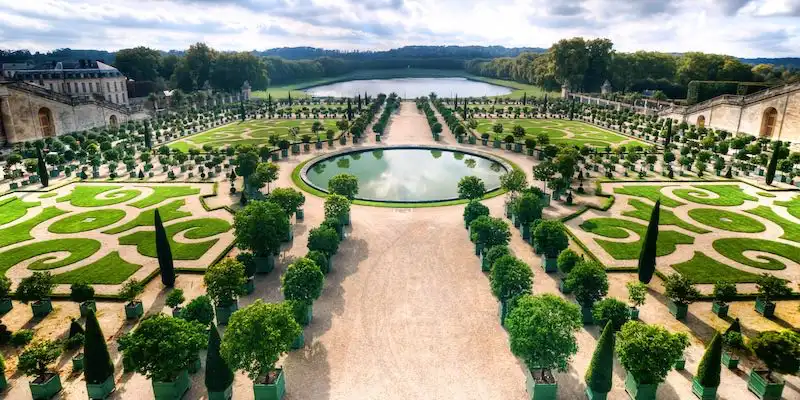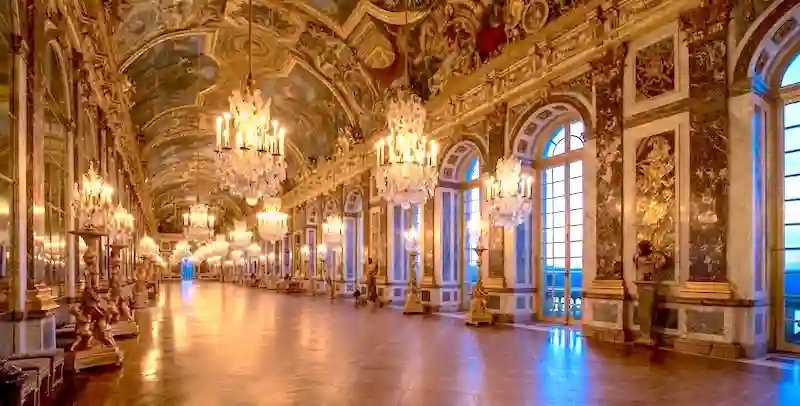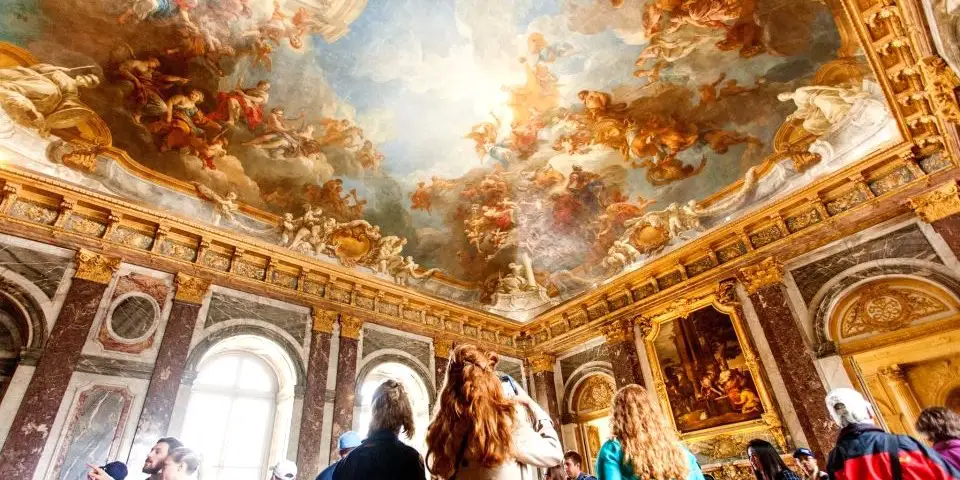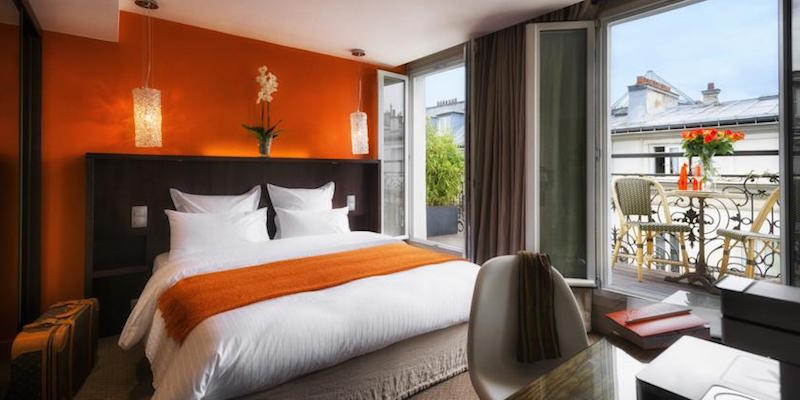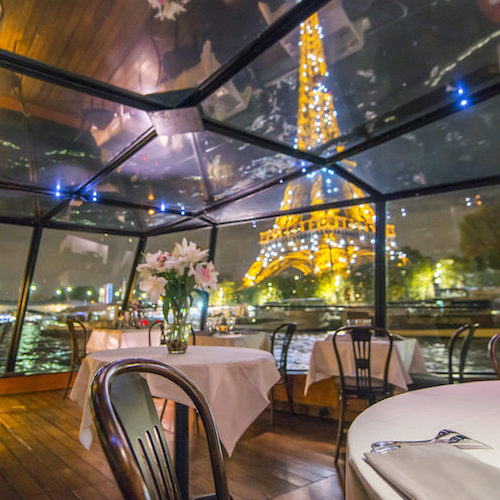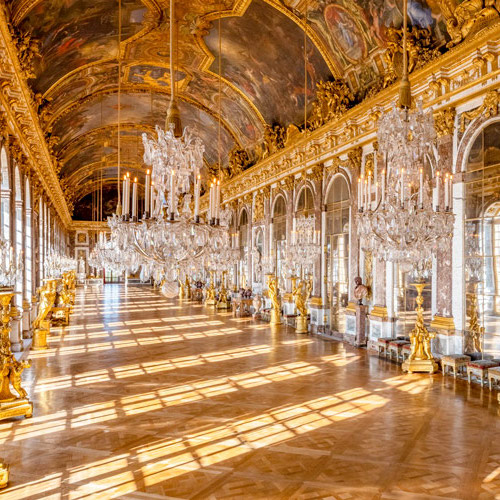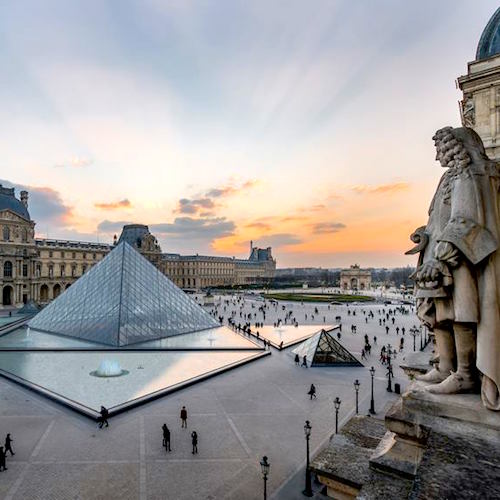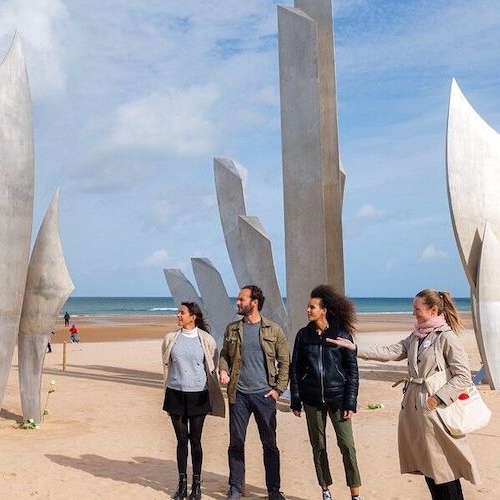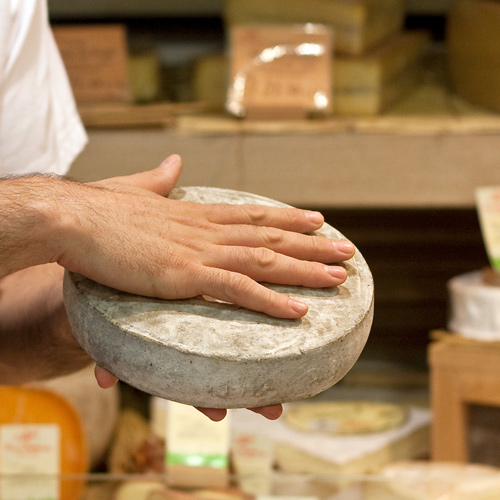Nine Things We Learned During Our Versailles VIP Tour
Back in 1789 the French Revolution was in full swing when an angry mob of women descended on the royal estate, demanding bread. This was essentially the end of the French monarchy and the last time a royal would ever live at Versailles. But, no French king could have ever predicted the palace and park would one day attract ten million visitors every year. Or that the most savvy of them would have chosen a Versailles VIP Tour.
On a recent Versailles VIP Tour, as our luxury eurovan parked at the VIP entrance, we caught a glimpse of the long lines of visitors stretching from the palace entry, across the courtyard, through the golden entry gates, and right outside the grounds. Luckily for us the crowd wasn't waving pitchforks this time, and we slipped into an exclusive side entrance with our guide. No lines there. By not wasting time in lines, in only half a day we saw a lot and learned these nine fascinating facts.
![]()
Our Top-Rated Versailles Experiences
1. The Best of Versailles with Priority Access & Gardens… Our #1 choice
2. Versailles Guided Half-Day Tour with Skip-the-Line Entry… With an expert interpreter/guide
3. Full-Day Bike Tour + Skip-the-Line Chateau Access… Visit Versailles on two wheels
4. Visit Versailles + Monet's Gardens at Giverny… On one glorious day trip
9 Things We Learned On A Versailles VIP Tour
![]()
![]()
1. Versailles is a Very, Very Busy Place
According to the official site, seven million visitors walk through the Hall of Mirrors each year. It's about as popular as the Louvre or the Eiffel Tower, making it one of the most popular historic sites on the planet. Translation: there's no way a smart traveler would just show up without having arranged a skip-the-line, Versailles VIP tour.
2. Ravages of the French Revolution
After the French Revolution, much of the estate's belongings were sold, destroyed, or stolen. Since then, it's been a long process of recovering the original furniture, tapestries, and art from auction houses and generous patrons of the palace. It's a full-time job to ensure the items are originals and not copies.
3. 10 Children in 10 Years
Louis XV (1710 to 1774) and his wife Marie (not Antoinette) had ten children in ten years — eight daughters and two sons. Louis XVI (1754 to 1793) was one of them. Called Mesdames de France, the girls did not lead a life of luxury. Only one would see her wedding day. Of those who survived early childhood, most were sent far away from court to live in austere conditions in convents. After the French Revolution, the remaining daughters escaped to Italy.
4. The Sun King Was Not Shining
Louis XIV, AKA The Sun King (1638 to 1715), had three baths in his entire lifetime. At the time, it was believed that cleansing the body would open the pores of the skin and make it vulnerable to disease.
The Top Three Versailles Tours From Paris
The Best Versailles Tour From Paris
![]()
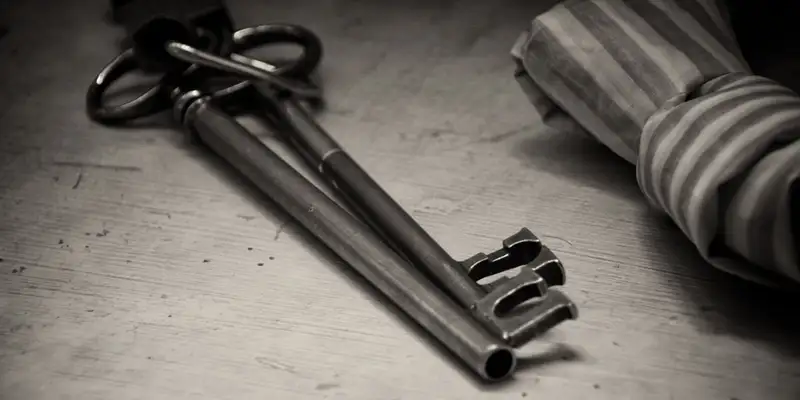 Two of the heavy, historic keys still used on the doors of Versailles
Two of the heavy, historic keys still used on the doors of Versailles
![]()
5. Royal Life Was Not Private
For the royals, daily life was a public event. From the moment they awoke to the minute they went to sleep, they were attended by servants, courtiers and members of the public. Anyone, it seems, could visit the palace day or night. There were security guards, but visitors could stroll through the rooms and enjoy the artwork, sculptures, and tapestries. At any given time, there could up to 3,000 royals, courtesans, and servants in the palace.
During the heyday of Versailles as a royal residence, the most important room was the King's Chamber, which overlooks the Marble Court. It's where banquets took place, and ceremonies were held. If you were lucky, you could even watch the king eat his dinner!
![]()
Discover What's On When You're Here...
• January... |
• February... |
• March... |
• April... |
• May... |
• June... |
• July... |
• August... |
• September... |
• October... |
• November... |
• December... |
Discover What's On When You're Here
• January...
|
• February... |
• March... |
|---|---|---|
• April... |
• May... |
• June... |
• July... |
• August... |
• September... |
• October... |
• November... |
• December... |
![]()
![]()
6. This Hall Is Shining
The Hall of Mirrors is lined with 357 mirrors. If you recall your high school history class, the Treaty of Versailles was signed here in 1919, officially ending World War I. And, really, the only way to get inside without the crowds is on a Versailles VIP tour.
7. The Gardens Are Vast
At 1,977 acres the gardens at Versailles are simply not doable on foot, for most people anyway. However, you can rent bicycles, golf carts, or take a little train to the Petit Trianon to see Marie-Antoinette's private getaway.
8. Hunting Lodge to Royal Palace
Versailles was begun by Louis XIII (1601-1643) as a humble hunting lodge; a massive expansion was effected by his successor, Louis XIV. In 1682, the Sun King officially moved his court and the government from Paris to the Palace of Versailles.
9. The Opera House
When the Royal Opera House at Versailles was inaugurated in 1770, it was the biggest performance hall in all of Europe. But, by the end of World War II, the Royal Opera House at the Palace of Versailles was in ruins. At that time a plan was enacted to return to its original glory. The restored opera house was inaugurated in April 1957, with Queen Elizabeth II in attendance. Today, the opera house is used for events throughout the year.
Make Your Versailles VIP Tour Unforgettable
A Versailles VIP tour is more than just skipping the lines — it's your gateway to a richer, more personal experience of the royal estate. With a private guide and exclusive access to areas most visitors never see, you get a deeper look into the palace's history and its most breathtaking spaces.
After exploring the château, take your time wandering the expansive gardens and fountains that define Versailles' grandeur. With the details handled for you, all that's left is to soak in the elegance and enjoy a day designed for unforgettable memories.
![]()
|
Browse our hand-picked Paris hotel deals with real-time discounts of up to 20%. Stay in the Marais, Saint Germain, the Latin Quarter, the Left Bank near the Eiffel Tower… every arrondissement is on the list. |
|
Browse our hand-picked Paris hotel deals with real-time discounts of up to 20%. Stay in the Marais, Saint Germain, the Latin Quarter, the Left Bank near the Eiffel Tower… every arrondissement is on the list. |
